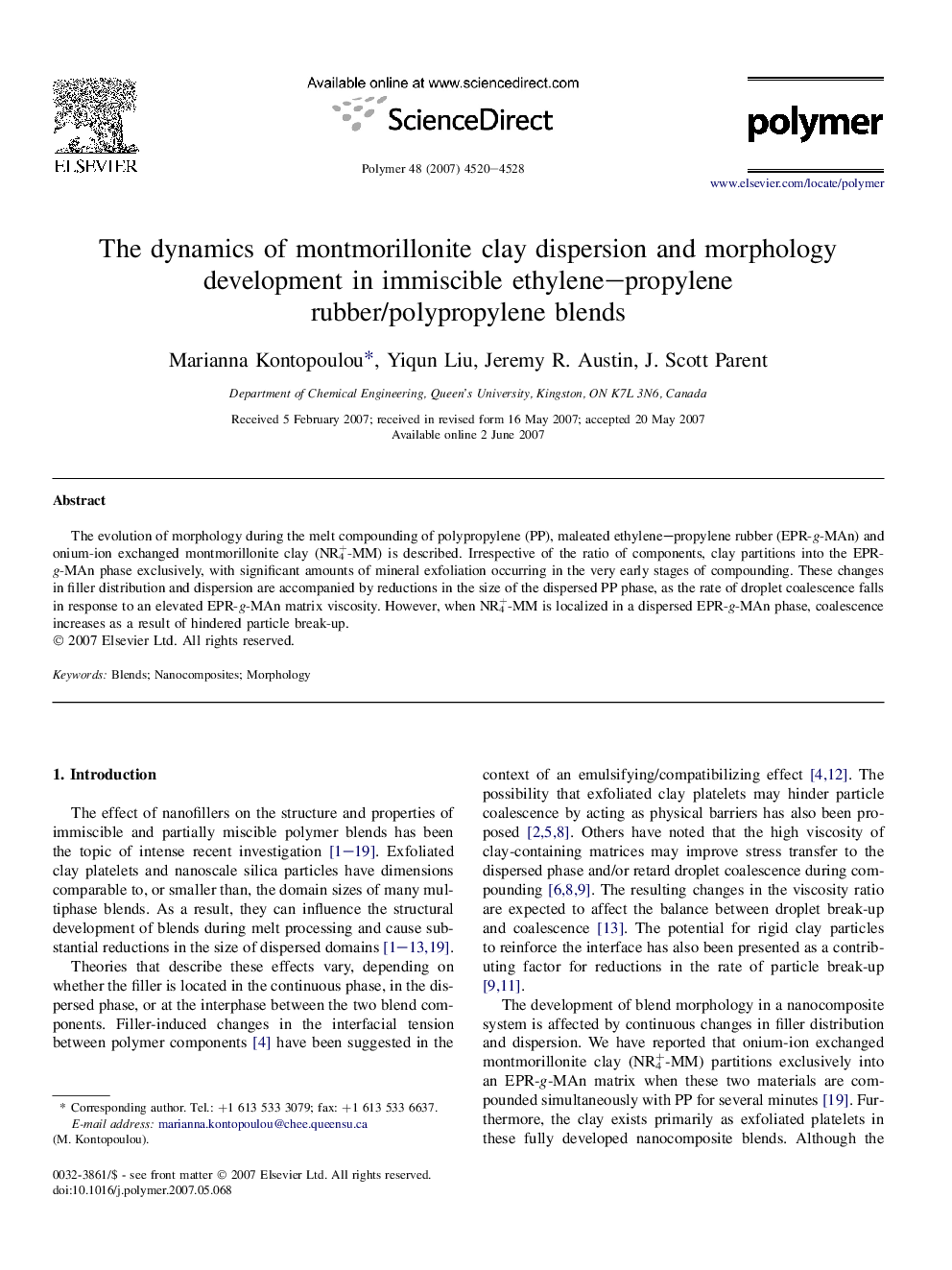| Article ID | Journal | Published Year | Pages | File Type |
|---|---|---|---|---|
| 5188661 | Polymer | 2007 | 9 Pages |
Abstract
The evolution of morphology during the melt compounding of polypropylene (PP), maleated ethylene-propylene rubber (EPR-g-MAn) and onium-ion exchanged montmorillonite clay (NR4+-MM) is described. Irrespective of the ratio of components, clay partitions into the EPR-g-MAn phase exclusively, with significant amounts of mineral exfoliation occurring in the very early stages of compounding. These changes in filler distribution and dispersion are accompanied by reductions in the size of the dispersed PP phase, as the rate of droplet coalescence falls in response to an elevated EPR-g-MAn matrix viscosity. However, when NR4+-MM is localized in a dispersed EPR-g-MAn phase, coalescence increases as a result of hindered particle break-up.
Keywords
Related Topics
Physical Sciences and Engineering
Chemistry
Organic Chemistry
Authors
Marianna Kontopoulou, Yiqun Liu, Jeremy R. Austin, J. Scott Parent,
